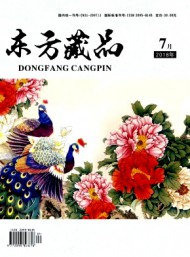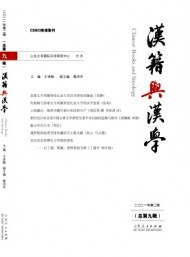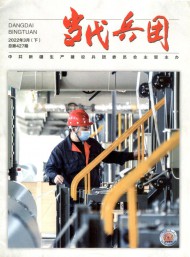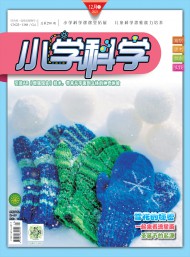关于颐和园的导游词范文
时间:2023-03-30 12:15:12
导语:如何才能写好一篇关于颐和园的导游词,这就需要搜集整理更多的资料和文献,欢迎阅读由公务员之家整理的十篇范文,供你借鉴。

篇1
大家好!
今天我要带大家去颐和园 各位游客,大家好!今天我要带大家去颐和园游玩,希望大家在颐和园留下一段美好的回忆。我叫黄嘉仪,你们叫我黄总导。
现在我们已经来到了长廊。你们看,绿漆的柱子,红漆的栏杆,一眼望不到头。这条长廊有七、八百米长,分成二百三十七间。每一间的横槛上都有五彩的花,画着人物、花草、风景,几千幅画没有哪两幅是相同的。长廊两旁栽满了花木,这一种花还没谢,那一种花又开了。微风从左边的昆明湖上吹来,使人神清气爽,你感觉到了吗?
大家看,我们现在走到了长廊的尽头。我们面前就是万寿山。大家抬头向上看,那一座八角宝塔形的三层建筑耸立在半山腰上,黄色的琉璃瓦闪闪发光。那就是佛香阁。下面的一排排金碧辉煌的宫殿,就是排云殿。
篇2
颐和园导游词英语作文:颐和园万寿山山前景区
The Front Hill Area(前山景区)
To the south of the Hall of Dispelling Clouds is the Gate of Dispelling Clouds positioned in the middle of the Long Gallery to divide the gallery's eastern and western sides. On each side of the gate lie bronze lions symbolizing protection, and twelve stone statues of the Chinese zodiac animals --- rat, ox, tiger, rabbit, dragon, snake, horse, sheep, monkey, rooster, dog and pig.
Long Corridor(Changlang 长廊)
The long corridor actually is a long covered walkway. It starts from the gate of the greeting the moon in the east and ends the marble boat in the west. It is 728 meters long with 273 sections, so it is called long corridor. The long corridor lies in front of the longevity hill with the gate of dispelling clouds in the center. It was first built in 1750 by emperor Qianlong for his mother to enjoy the rainy scenery on Kunming lake and to keep off the sunshine in summer. There are totally 14,000 pictures painted on the beams and crossbeams of the long corridor. These colorful paintings can be divided into 4 kinds: landscapes and scenic spots, beautiful flowers and birds, Chinese architecture and human figures. The beautiful flowers and birds and landscapes were copied from the scenery of West Lake. In 1990,the long corridor was listed in the Guinness world records as the longest painted corridor in the world. Like most of the summer Palace, the Long Corridor was severely damaged by fire which Anglo---French allied forces laid in 1860 during the Second Opium War. It was rebuilt in 1886. As a part of the Summer Palace, the Long Corridor was included on the UNESCO World Heritage List in December, 1998. There are four octagonal pavilions with double eaves, two on each side of the Cloud---Dispelling Gate. The pavilions symbolize the four seasons(spring, summer, autumn, winter)and are named(from east to west): Liu Jia (留佳 “retaining the goodness”), Jin Lan (寄澜;“living with the ripples”), Qiu Shui(秋水 “autumn water”), and Qing Yao (清遥 “clear and far”)。
The name of the hall of Dispelling Clounds derivers from a verse by the poet Guo Pu(276-324) in the Jin Dynasty “in such a splendid hall, supernatural beings will emerge.” It is situated on the central axis of Longevity Hill and is the heart of a succession of buildings used for celebrations. Built on the site of Daxiong Hall (Hill of Sakyamuni or Main Shrine Hall), it was the place to celebrate Empress Dowager Cixi's birthday. On her birthday, October 10 of the Chinese lunar year, with Emperor Guangxu leading the troops, all ranks kowtowed to her as she sat on the “Nine-Dragon Throne” to receive greetings and rare gifts. With red pillars and yellow tiles, the Paiyundian contains 21 rooms. Although the treasures on display inside are fewer than those in the Hall of Benevolence and Longevity, some of the are more valuable.
Although this is the most magnificent architectural complex of the Summer Palace, CIxi used the hall only once a year on her birthday.
Tower of Buddhist Incense(佛香阁)
As the symbolic structure, the Tower of Buddhist Incense tops the high grand towers of both the Summer Palace and the“ three mountains and five gardens” (Longevity Hill, Jade Spring Mountain , and Fragrant Hill; Garden of Clear Ripples, Garden of Everlasting Spring, Garden of Perfection and Brightness, Garden of Tranquility and Brightness, and Garden of Tranquility and Pleasure)。 Set up on the 21-meter-high(68.9-foot-high)base steps of the front slope of Longevity Hill and towering to a high of 41 meters(134.5 feet), it can be seen from throughout the area. Facing Kunming Lake southward, backing on the Hall of the Sea of Wisdom, it was flanked by symmetrical building. With eight porticos, three levels and four layered eaves, the front part imitates the Yellow Crane Tower in Hubei Province. It is the elite tower among treasured ancient structures.
A nine-level pagoda at the tower's location was planned which Emperor Qianlong(1711-1799) ordered to be dismantled during the construction of the eighth level. After the unfinished pagoda, there stood the Tower of Buddhist Incense instead in 1758. Unfortunately, it was ruined by Anglo-French forces in 1860; then rebuilt during1891-1894, at a cost of 780,000 taels of silver. Inside is a gilded statue of the thousand-handed Kwan-yin. Set off by eight, it glows with sacred beauty. On the first day and fifteenth day of the lunar month, the Empress Dowager Cixi would go there to pray and burn joss sticks. In 1989,the Tower of Buddhist Incense was opened to the public. It is now undergoing reconstruction, the largest such project in modern China, costing 50,000,000 yuan with a planned completion date in 2006.
Standing on the third story, visitors can see forests as well as Kunming Lake reflecting the picturesque landscapes.
Hall of the Sea of Wisdom(智慧海)
Grand Buddha stably sitting in the Hall of the Sea of Wisdom, Summer Palace, Beijing Built on the pinnacle of Longevity Hill, The Hall of the Sea of Wisdom is designed to stand at the upper end of an axis stretching from the Kunming Lake to the summit. When initially built during made entirely of colored glaze bricks, without any timber beams, and was also known as “No Beam Hall”。 Owing to its timber-free frame, it survived the fire set by the Anglo-French allied force in 1860. However, the holy statue of Amitayus Buddha, as well as 1008 smaller engraved Buddhas surrounding it, was destroyed.
It is a holy building, with its name,“ the Sea of Wisdom” which comes from the sutra, symbolizing the mighty force and the infinite wisdom of Tathagada Buddha. A visitor who connects the three characters on the architraves of the hall and the glazed memorial archway will find that form the Buddhist's chant.
Purple Cloud Gate Tower(紫气东来)
This two-story tower structure, on the east slope of the Longevity Hill, was built during Emperor Qianlong's reign(1736-1795)。 The inscriptions on both sides of the tower were written by Emperor Qianlong.
The inscription on the north gate-tower “Chichengxiaqi” means “the rosy clouds rising in Chicheng Mountain.” Chicheng is the name of a place in Zhejiang province. This phrase describe the gate-tower shining from the morning sunshine.
The four Chinese characters on the south gate-tower, “Ziqidonglai” means “the purple clouds come from the east.” This phase comes from a story about an ancient Chinese philosopher named Laozi, who was trying to get through a major military pass named Hangu Pass. It was said that Ling Yin, a military official in this pass, saw a wisp of purple clouds coming gently from the east. He knew that this good omen meant that a saint was coming. Than he took a bath and put on his new clothes, getting everything ready to welcome the saint. The next day he really saw LaoZi riding slowly to the pass on a black ox. Later, a famous post Du Fu of the Tang Dynasty wrote this story in his poem.
The Hall for Listening to Orioles(听鹂馆)
The Hall for Listening to Oriole used to be a Two-story stage built by Emperor Qianlong for his mother Emperor Dowager Niugulushi to enjoy Peking opera and performances. The stage was later used by Empress Dowager Cixi.
Oriole is a kind of bird, and it has very sweet voice and pleasing sound; ergo, the stage is named “Hall for Listening to Oriole.” After the Garden of Virtuous Harmony was complete, the hall became a residence for imperial concubines. Now it is a very nice restaurant for both Chinese and foreign tourists.
颐和园导游词英语作文:颐和园的宫廷区
The Summer Palace is located on the northwest outskirts of Beijing. It is the best-preserved and largest imperial garden existing in China. The Summer Palace is formed mainly with Longevity Hill and Kunming Lake. The lake occupies three quarters of the whole area. It covers an area of over 290 hectares.
The Summer Palace was first built as an imperial garden and palace at the beginning of 12th century in the Jin Dynasty, the construction continued to the Yuan and Ming dynasties and the palace was enlarged in the Qing Dynasty, thus, altogether lasting for more than 800 years. In the Jin Dynasty, the Golden Hill Hall was built here. In the Yuan Dynasty, the name of the hill was changed to Jar Hill because it was said that an old man had dug up a jar here. In the Ming Dynasty, Emperor Zhengde built the Wonderful Imperial Garden by the lake. In the Qing Dynasty during the reign of Emperor Qianlong, large-scale construction of imperial gardens reached its culmination. The whole project was named the Three Hills and Five Garden of Clear Ripples. In 1860 the Anglo-French Allied Forces invaded Beijing and the Three Hills and Five Gardens were burnt down to ashes. In 1888 Empress Dowager Cixi diverted the funds for navy to restore the Garden of Clear Ripples and renamed it as the Summer Palace. In 1900 the Allied Forces of Eight Powers invaded Beijing and occupied the Summer Palace for more than a year. The Summer Palace was plundered by the invaders. They took away everything valuable and destroyed the buildings. Upon Empress Dowager Cixi's return to Beijing, she ordered the garden to be rebuilt immediately. When reconstruction to Beijing, she ordered the garden to be rebuilt immediately. When reconstruction was completed, Empress Dowager Cixi came to live in this imperial garden from April to October every year for the rest of her life. In 1924 the Summer Palace was turned into a public park.
The East Palace Gate is the main entrance to the Summer Palace. The central gate called the Imperial Gateway was for the emperor and the empress. The gates on either side were for princes and high-ranking officials. The plaque above the middle gate bears three big Chinese characters “The Summer Palace” in Emperor Guangxu's handwriting.
Entering the East Palace Gate, we will see the Gate of Benevolence and Longevity. It's the second gate in the palace area. Inside the gate, there is 3-meter-high giant rock. The rock serves as a decoration and it was transported from Taihu Lake in Jiangsu Province, so it is called Taihu Rock. Now we have come to the Hall of Benevolence and Longevity. The hall was the place where Emperor Guangxu and Empress Dowager Cixi held audience and handled state affairs when they were in the Summer Palace. In front of the hall stands a bronze mythical animal called Suanni. It is believed that the Suanni was able to distinguish the right from wrong. In the center of the hall there is a platform with a throne on it. The throne was carved with a nine-dragon design, symbolizing dignity of the emperor. There are four incense burners at each corner of the platform with a throne on it. The throne was held, sandalwood incenses were burnt in the incense burners, giving out fragrant smoke. There are two fans on both sides behind the throne which are made of peacock feathers. In front of the throne there are incense burners of dragon and phoenix shapes and candlesticks of crane shape. The two big mirrors on the left and right of the throne against the wall was for warding off evil spirits. There are two scrolls on the wall, one on each side, with a big Chinese character meaning longevity, in Empress Dowager Cixi's handwriting and the 100 bats in the background of the scroll symbolize happiness.
The Hall of Jade Ripples used to be the place where Qing Emperor Qianlong spent his leisure hours with his ministers. Later it was Emperor Guangxu's pricate living quarters and also the place where he was once under house arrest after 1898.
Walking along the corridor at the two side of the Hall of Jade Ripples, we will see the back word the Hall of Pleasing Rue where the empress Longyu lived.
篇3
游客们好!欢迎大家光临承德避暑山庄。我是你们的导游郭涵嫣,非常高兴能有机会陪同各位一起游览有避暑圣地之称的这座皇家园林。让我们一起共度今天的美好时光。
承德避暑山庄是世界文化遗产和中国现存最大的古典皇家园林。它始建于1703年,耗时89年建成,与颐和园、拙政园、留园并称为中国四大名园。承德避暑山庄由皇帝宫室、皇家园林和宏伟壮观的寺庙群所组成,又名承德离宫或热河行宫,是清朝皇帝为了安抚、团结中国边疆少数民族,巩固国家统一的政治目的而修建的一座夏宫。
请各位绕过回廊,来到帝后和嫔妃们居住的地方,这叫后寝。清朝的咸丰皇帝就是在西暖阁最西边的屋子里驾崩的。现在这里展出的是咸丰皇帝和慈安、慈禧两个皇后当年的一些生活用品和照片。
我们现在来到了山区。避暑山庄最大的特色就是山中有园,园中有山,山区占了整个园林面积的4/5。从西北部高峰到东南部湖沼、平原地带,相对等差180米,形成了群峰环绕、色壑纵横的景色。山谷中清泉涌流,密林幽深,景色宜人,是游客们的必游之地。由于山区路途遥远,我们必须乘坐游览车参观,请大家排好队,一个一个上车,一定要注意安全啊!
各位游客们,今天的承德避暑山庄一日游就快结束了,大家玩得开心吗?我相信回答是肯定的!明天,我们要去山庄外围的寺庙群著名的外八庙参观,希望各位好好休息,养精蓄锐,我们明天再见!
承德避暑山庄导游词二:
亲爱的游客们,你们好!欢迎大家来承德避暑山庄进行观光浏览。我是你们这次旅行的导游王导,希望我的讲解能为你们的旅途增添欢乐。
我们所在的避暑山庄位于承德市区北部,是我国现存最大的古典皇家园林。这里是清代康、乾盛世的象征。作为山庄缔造者的康熙、乾隆,都曾六下江南,遍历天下景物之美。在修建山庄时,博采众家之长,融合中国南北园林风格为一体,使避暑山庄成为中国古典园林艺术的总结与升华。各位游客朋友们,请您收拾好背包,现在我要带着大家大饱眼福了。
各位,我们面前这座古色古香的门,就是避暑山庄的正门,叫丽正门,是清代皇帝进出的门。宫门面宽三间,分上下两层。下层辟有三个方形的门洞,上层有城台和阙楼。请看,中间门洞上方有一块石匾,上面是乾隆皇帝用满、藏、汉、维、蒙五种文字题写的丽正门,它象征着我们祖国是个统一的多民族国家。门的两边有两尊石狮子,以显示皇帝的威严。
朋友们,请随我踏入庄内吧!请各位向右看,远处的山峦上有一巨大的石柱,擎天而立,直插云端。它上粗下细,很像洗衣用的棒槌,因此承德人叫它棒槌山,康熙皇帝赐名磬锤峰。修建避暑山庄时,巧借此景,使山庄内外浑然一体,扩大了空间感,创造了新的意境养,这是山庄设计者运用借景这一造园艺术的成功典范。
游客朋友们,现在我要带你们去湖区最大的岛屿――如意洲岛观赏。如意洲岛上建筑很多,康乾七十二景中有十景在这里。主体建筑是一座宫殿。门殿的名字是无暑清凉,正殿为延熏山馆,面宽七楹,建筑宏伟,殿后有水芳岩秀殿。正宫落成前,这里是康熙皇帝处理朝政和居住的地方。现在这里展出的是清宫用品。岛的西北处是著名的园中之园――沧浪屿,是仿苏州沧浪亭而建的。虽面积不大,但殿堂、水阁、清泉、小亭、回廊巧妙地组织在一起,令人流连忘返。
篇4
一、选择学点的主要依据
如何确定语文课堂主题,选择恰当的学点呢?我们主要依据五个方面进行思考:课程特点、学段任务、单元编排、学本特点和学生实际。
小学第一学段(一二年级)的学习任务主要是:1.识字、写字,认识1600个常用汉字,其中800个会写,掌握2000个常用词;2.正确朗读课文,在熟练的基础上读得通顺流畅;3.理解少量重点词句。第二学段(三四年级)的学习任务是:1.继续落实识字、写字、学词的要求,会认2500个词语,会写1600个词语;2.理解词句意思,体会词句的表达效果,逐步培养对文本做出解释的能力;3.加强段的学习,学习归纳段落大意,理清叙述顺序,了解构段方式;4.加强朗读,在低年级读通、读顺的基础上,练习有感情地读,能够一边读一边想,并做简单批注;5.学习浏览和略读,粗知课文大意,整体把握文本;6.养成读书看报的习惯。第三学段(五六年级)的学习任务主要是:1.继续进行词句学习,根据上下文推断关键词句的多重含义;2.加强篇的学习,体会文章表达的思想感情,学习文章的表达顺序,领悟基本表达方法;3.学习不同文体的特点及阅读方法;4.能根据文本说出自己的观点,并根据需要加工有用信息。
现行人教版语文教材是按照文章主题编排的,单元导语中既有内容主题,也包含能力主题。如四年级上册第三单元导语的内容主题为“中外童话”,能力主题为“了解童话的内容,品味童话的语言,体会童话的特点”。也有的单元导语中没有明确能力主题,需要根据单元编排特点自主确定。如三年级上册第五单元导语是关于中华传统文化的,内容涵盖了古代的大思想家、神话故事、古代建筑和绘画等。这就需要教师合理把握教学重点。
确定教学目标,不仅要关注文本的语言特点,还应考虑其文体特点。如寓言常以比喻性的故事寄寓意味深长的道理,给人以启示,其特点为:以事说理,以理服人;故事简短,道理深刻。在教学寓言类文本时,教师就要从这些特点出发,突出“事”与“理”,“事”是教学重点,“理”是教学难点。当然,教学目标的确定,还要充分考虑地域特点和学生的发展实际等相关因素。
二、对各年级单元学点进行分析
明确了选择依据后,我们对每个年级的学点进行了细致分析,然后在教学中以此为主线,一一落实。下面举几个实例来说明我们的具体做法。
三年级上册第五单元学点分析。本单元的主题是“灿烂的中华文化”,其中《孔子拜师》是叙事性文章,《赵州桥》是说明性文章。我将单元学点确定在对课文中重点词句的理解上。学生可以查字典理解词语,也可以联系上下文或结合生活实际来体会。通过对关键词句的理解,学生能从多方面理解中华文化的博大精深,进一步加深热爱祖国文化的情感和民族自豪感,实现单元主题的回归。
教学《孔子拜师》时,我抓住词语“风餐露宿”“日夜兼程”“终于”进行引导,启发学生结合自己的生活实际理解这些词语,体会孔子求知若渴的心情。此外,还有两对意思相近的词语“等候”和“迎候”,教师可以引导学生在具体的语言环境中领会:“迎候”有迎接之意,“等候”则强调耐心等待。通过这两个词语的比较和品读,能体会到老子的谦和有礼和孔子的尊师重道。
教学《赵州桥》一文时,我抓住“雄伟”这个词语来引导学生重点体会。文章通过总起句引出后文,依次描写了赵州桥的长度、宽度、建筑材料、形状等,都是围绕“雄伟”这一词语进行的。这些内容的扩充让“雄伟”一词由抽象变为具体可感。此外,在理解“这种设计,在建桥史上是一个创举”中的“创举”一词时,可以让学生查字典,鼓励学生用举例子的方法说说对“创举”的理解,并造几个句子。
四年级上册第五单元学点分析。对于《长城》《颐和园》《秦兵马俑》三篇文章的教学,我确定了统一的学点:探索文路,体会文章结构美。之所以选这个学点,是因为第五单元的习作练习是写导游词,而导游词最重要的就是要条理清晰。很多学生习作条理不清、重点不突出,这三篇文章的结构各具特色,有章有法,非常适合学习借鉴。
《长城》一文是典型的见闻加联想,一二段写所见,三四段写所想。因此,教师教学时可以引导学生学习由眼前景物联想他物的方法,重点让学生明白联想与见闻的关系,并把握作者的情感。
《颐和园》一文按“移步换景”的游览顺序组织文章,其清晰的结构可以说是游记文的范本。教师在教学中要引导学生思考,从课文的哪些句子可以看出作者在移步,又换了哪些景。教师要在黑板上一边勾画路线、一边标出游览点,画出示意图,让学生学习作者通过“进了、绕过、来到、走完、登上、下来、走过”等动词连接过渡景物的方法。课文学完后,教师可以再用丛书中有相似语言结构的文章做拓展,并让学生试着练笔,巩固移步换景文章的写作方法。
五年级上册第四单元学点分析。“生活中的启示”这一单元几篇课文情节性强,语言质朴简洁而含义深刻,都是从生活中的小事着眼,反映出如何做人的大道理。每篇文章都有能直接点明主旨的关键词句,教师教学中要重点抓住这些关键词,引导学生读懂文章,联系生活,从而有所感悟,得到启示。
如《钓鱼的启示》一文。学点一是“我”的情感变化。教师要尽量让学生透过简单的文字发散思维,在朗读中感受“我”对钓鱼的喜爱。这样,学生能更真切地体会“我”放掉大鲈鱼时的苦恼与不舍,理解“道德抉择”的困难。学点二是学习文章以事明理的表达方法。教师要引导学生抓住重点句和关键词,把握文章的写作特点,并进行仿写和比较阅读。
又如《通往广场的路不止一条》一文。学点一是理清课文脉络,即一个场景、两个事件、一段感悟。此文可与《钓鱼的启示》对比来读,让学生找找两篇文章的异同点,再思考对这种特点的文章应该如何借鉴。学点二是理解品读重点语句――“我大喜过望,脚下仿佛踩着一朵幸福的云”“那朵幸福的云突然消失了,我只好垂头丧气地与她告辞”。通过赏析,学生可以很好地体会“我”心情的大起大落以及这种表达方式的好处。
六年级上册第五单元学点分析。“初识鲁迅”单元在导读中提出认识鲁迅、了解鲁迅。另外,学习描写人物的基本方法是单元学习的重要任务。这些内容五年级下学期曾经进行过系统学习,六年级的学生应该已基本掌握。
《少年闰土》通过看瓜刺猹、雪地捕鸟、海边拾贝、看跳鱼四件事刻画了聪明能干、见多识广的少年闰土形象。《我的伯父鲁迅先生》通过回忆谈《水浒传》、笑谈碰壁、救助车夫、关心女佣四件事表现鲁迅先生为自己想得少、为别人想得多的优秀品质。《一面》则通过鲁迅先生赠书,表现出他对青年的关心。单元习作是让学生通过一两件事写出小伙伴的特点,因此,“以事写人”应该是几篇课文的共同学点,并且是学习习作的重点。



